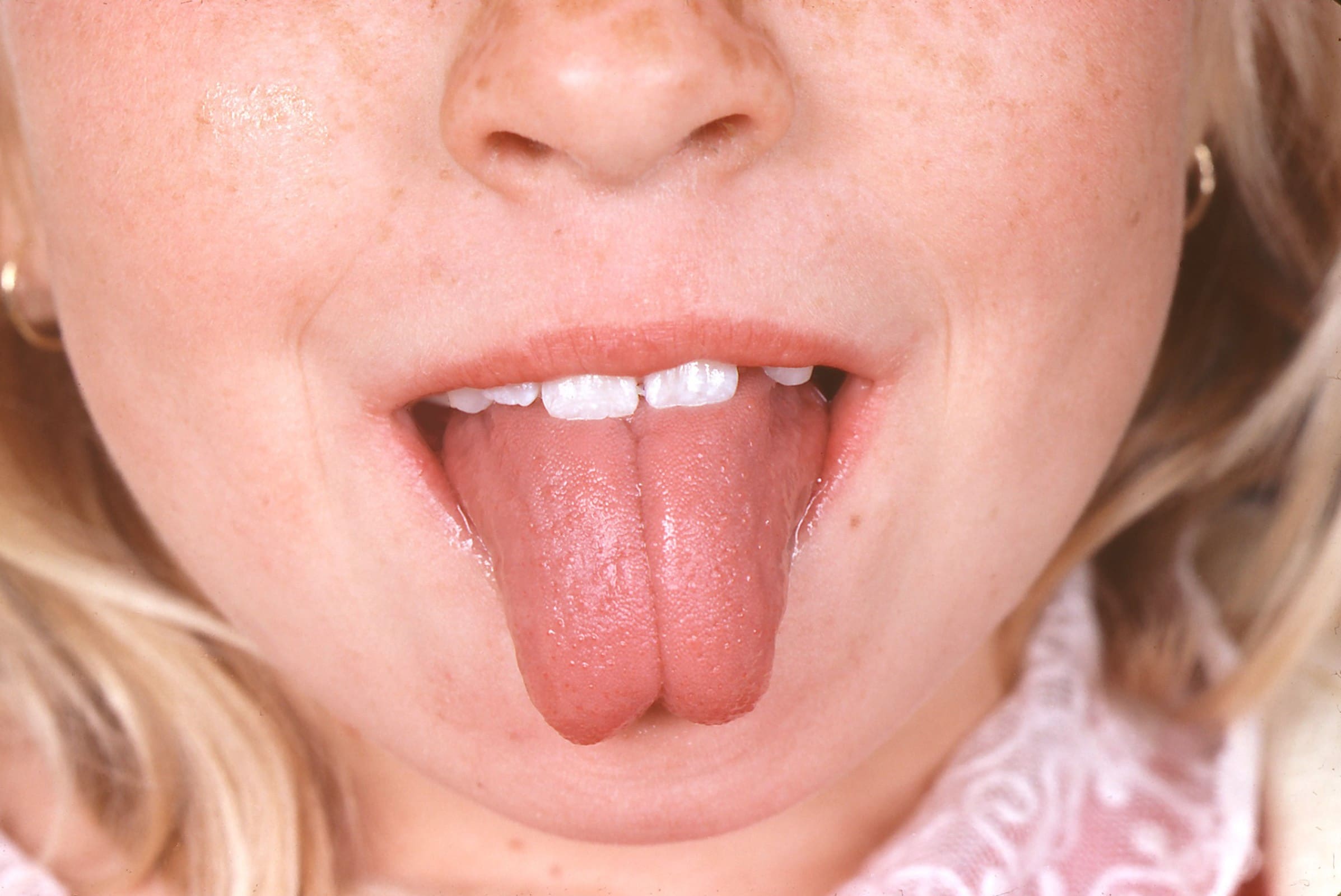
What is a cleft tongue? A cleft tongue, also known as a bifid tongue, is a rare congenital condition where the tongue is partially or completely split. This anomaly can occur on its own or as part of various syndromes. The tongue develops during the fourth week of pregnancy, and any disruption in this process can lead to a cleft tongue. Symptoms can include speech difficulties, feeding problems in infants, and a visibly split tongue. Treatment usually involves surgical intervention to repair the cleft, often followed by speech therapy. Understanding cleft tongue is crucial for early diagnosis and effective treatment.
Key Takeaways:
- Cleft tongue is a rare condition where the tongue is split, often associated with other syndromes. Early diagnosis and multidisciplinary treatment are crucial for improving speech and feeding functions.
- Genetic and environmental factors can contribute to cleft tongue. Surgical intervention, speech therapy, and parental support play key roles in the recovery and development of children with this condition.
What is a Cleft Tongue?
A cleft tongue, also known as a bifid tongue, is a rare congenital condition where the tongue is partially or completely split. This anomaly can occur alone or as part of various syndromes. Let's dive into some fascinating facts about cleft tongue.
-
Definition: A cleft tongue is a congenital anomaly where the tongue is partially or completely split. This condition can occur in isolation or as part of various syndromes.
-
Incidence: The exact incidence of cleft tongue is not well-documented, but it is considered a rare condition. It is often associated with other orofacial anomalies and syndromes.
-
Embryological Development: The tongue develops during the fourth week of intrauterine life from a median swelling, the tuberculum impar, and two lateral lingual swellings. Abnormal fusion of these structures can lead to cleft tongue.
Causes and Types of Cleft Tongue
Understanding the causes and types of cleft tongue can help in early diagnosis and treatment. Here are some key points:
-
Causes: Cleft tongue can result from disturbances in the embryological development of the tongue, including non-fusion or partial fusion of the brachial arches. It may also be associated with genetic syndromes and environmental factors.
-
Types of Cleft Tongue: There are different types of cleft tongue, including median cleft tongue, which is the most common type, and lateral cleft tongue, which is less common.
Symptoms and Associated Syndromes
Cleft tongue can present with various symptoms and is often linked to other syndromes. Let's explore these aspects:
-
Symptoms: Symptoms of cleft tongue can include difficulty in protruding the tongue, speech difficulties, and feeding problems in infants. In some cases, the tongue may appear bifurcated or split.
-
Associated Syndromes: Cleft tongue is often associated with various syndromes, including orofacial digital syndromes type I, II, IV, and VI. It can also be linked to conditions like Opitz G BBB syndrome, oral–facial–digital syndrome type I, Klippel–Feil anomaly, and Larsen syndrome.
Genetic and Environmental Factors
Both genetic and environmental factors can play a role in the development of cleft tongue. Here are some insights:
-
Genetic Predisposition: While many cases of cleft tongue are isolated, some may have a genetic predisposition. However, the exact genetic mechanisms are not fully understood.
-
Environmental Factors: Environmental factors such as maternal diabetes have been linked to an increased risk of cleft tongue. Additionally, tongue piercing has been reported as a rare cause of cleft tongue.
Clinical Presentation and Diagnosis
The clinical presentation of cleft tongue can vary widely, and accurate diagnosis is crucial for effective treatment. Here are some important points:
-
Clinical Presentation: The clinical appearance of cleft tongue can vary widely. In some cases, it may be associated with other orofacial anomalies like cleft lip and palate, mandibular clefts, and midline palatomandibular bony fusion.
-
Diagnosis: Diagnosis of cleft tongue is typically made through clinical examination. Imaging studies like computed tomography (CT) scans may be used to confirm the diagnosis and assess the extent of the cleft.
Treatment and Surgical Techniques
Treatment for cleft tongue usually involves surgical intervention. Here are some details about the treatment process:
-
Treatment: Treatment for cleft tongue usually involves surgical intervention to repair the cleft. The goal is to improve speech and feeding functions. In some cases, speech therapy may also be necessary to address any speech difficulties.
-
Surgical Techniques: Surgical techniques for repairing cleft tongue can vary depending on the extent and location of the cleft. In some cases, a single-stage mandibular repair may be performed, while in others, multiple stages may be required.
Post-Surgical Care and Speech Therapy
Post-surgical care and speech therapy are crucial for recovery and improving speech functions. Here are some key points:
-
Post-Surgical Care: Post-surgical care for cleft tongue repair includes managing pain, preventing infection, and ensuring proper healing. Speech therapy is also crucial in the post-operative period to help the child regain normal speech functions.
-
Speech and Language Development: Children with cleft tongue may experience speech and language development delays. Early intervention with speech therapy is essential to help these children develop normal speech and communication skills.
Feeding Challenges and Nutritional Support
Infants with cleft tongue may face feeding challenges. Proper nutritional support is essential for their growth and development. Here are some insights:
-
Feeding Challenges: Infants with cleft tongue may face feeding challenges due to difficulty in creating suction. Specialized feeding equipment such as cleft bottles and teats can help alleviate these issues.
-
Nutritional Support: Ensuring proper nutrition is crucial for infants with cleft tongue. Expressing breast milk and using specialized bottles can help ensure that the baby receives adequate nutrition despite feeding difficulties.
Psychosocial Impact and Parental Support
Cleft tongue can have a significant psychosocial impact on both children and their families. Here are some important points:
-
Psychosocial Impact: Cleft tongue can have a significant psychosocial impact on both children and their families. Early intervention and support from healthcare providers can help mitigate these effects.
-
Parental Support: Parents of children with cleft tongue play a crucial role in their child’s recovery and development. Support groups and counseling can help them cope with the emotional and practical challenges associated with this condition.
Genetic Counseling and Prevalence
Genetic counseling and understanding the prevalence of cleft tongue can help in managing the condition effectively. Here are some key points:
-
Genetic Counseling: Genetic counseling may be recommended for families with a history of cleft tongue or other congenital anomalies. This can help identify potential risks and provide guidance on future pregnancies.
-
Prevalence: The prevalence of cleft tongue varies widely depending on the population being studied. It is generally considered a rare condition but can be more common in certain genetic syndromes.
Embryological Processes and Tessier #30 Cleft
Understanding the embryological processes and specific conditions like Tessier #30 cleft can provide deeper insights into cleft tongue. Here are some details:
-
Embryological Processes: The development of the tongue involves complex embryological processes. Any disruption in these processes can lead to congenital anomalies like cleft tongue.
-
Tessier #30 Cleft: Tessier #30 cleft is a rare craniofacial anomaly characterized by a complete median cleft of the mandible and tongue along with ankyloglossia. This condition requires specialized surgical intervention.
Ankyloglossia and Dental Implications
Cleft tongue can be associated with conditions like ankyloglossia and have dental implications. Here are some key points:
-
Ankyloglossia: Ankyloglossia, or tongue-tie, is often associated with cleft tongue. This condition involves the tongue being attached to the floor of the mouth, which can affect speech and feeding.
-
Dental Implications: Cleft tongue can have dental implications, such as midline splits in the dentition. This requires careful management during dental treatment to ensure proper alignment and function of the teeth.
Speech Therapy and Multidisciplinary Approach
Speech therapy and a multidisciplinary approach are essential for managing cleft tongue effectively. Here are some insights:
-
Speech Therapy: Speech therapy is essential for children with cleft tongue to address speech difficulties. Techniques such as articulation therapy and phonological therapy can help improve speech clarity and overall communication skills.
-
Multidisciplinary Approach: Treatment for cleft tongue often involves a multidisciplinary approach, including plastic surgery, speech therapy, and pediatric care. This ensures comprehensive management of the condition and addresses all related aspects.
Long-Term Outcomes and Research
Long-term outcomes and ongoing research are crucial for improving the management of cleft tongue. Here are some key points:
-
Long-Term Outcomes: Long-term outcomes for children with cleft tongue depend on the extent of the cleft and the effectiveness of treatment. Early intervention and ongoing support can significantly improve speech and feeding functions.
-
Research and Development: Ongoing research into the causes and treatment of cleft tongue is essential for improving outcomes. Advances in surgical techniques and speech therapy methods can help better manage this condition.
Awareness and Education
Raising awareness and educating healthcare providers and the public about cleft tongue can lead to early diagnosis and treatment. Here are some final points:
- Awareness and Education: Raising awareness about cleft tongue among healthcare providers and the general public is crucial for early diagnosis and treatment. Education on the signs and symptoms of this condition can help identify affected individuals promptly.
Final Thoughts on Cleft Tongue
Cleft tongue, also known as bifid tongue, is a rare congenital condition where the tongue is split partially or completely. It can occur alone or as part of various syndromes. Symptoms include speech difficulties, feeding challenges, and a bifurcated tongue appearance. Diagnosis is usually through clinical examination, sometimes confirmed with imaging studies. Treatment often involves surgical repair and speech therapy. Early intervention is crucial for better outcomes. Genetic counseling may be recommended for families with a history of cleft tongue. The condition can have significant psychosocial impacts, making support and education vital. Understanding cleft tongue's causes, symptoms, and treatments helps in providing optimal care. Ongoing research and awareness are essential for improving diagnosis and treatment methods. With the right approach, individuals with cleft tongue can lead healthy, fulfilling lives.
Frequently Asked Questions
Was this page helpful?
Our commitment to delivering trustworthy and engaging content is at the heart of what we do. Each fact on our site is contributed by real users like you, bringing a wealth of diverse insights and information. To ensure the highest standards of accuracy and reliability, our dedicated editors meticulously review each submission. This process guarantees that the facts we share are not only fascinating but also credible. Trust in our commitment to quality and authenticity as you explore and learn with us.


